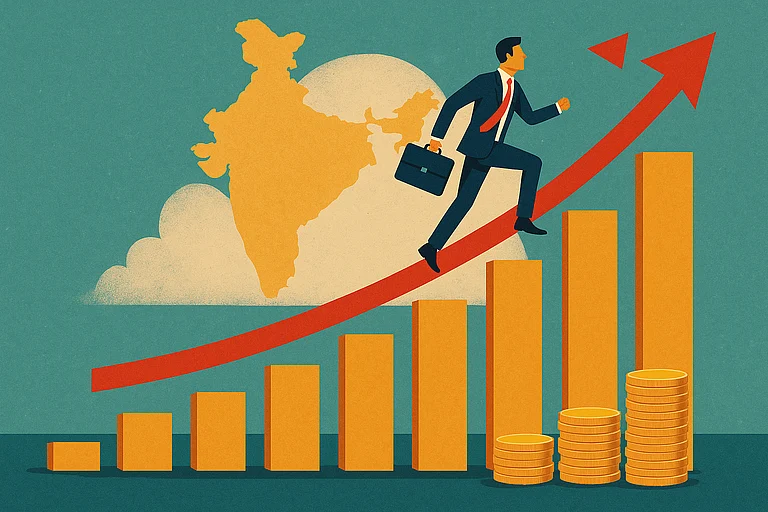
Summary of this article
AMFI’s numbers show that folks who stayed invested—through the 2008 crash, COVID chaos, and the bounce-backs—outperformed those who hit pause or cashed out. Discipline beats drama.
Let’s face it—market chaos isn’t an anomaly anymore. It’s the standard operating mode.
Wealth managers say that after tracking investor behavior for many years, one thing becomes crystal clear: folks who truly grow their wealth don’t panic when things go haywire—they lean in. They see uncertainty not as a red flag, but as a green light.
Keep Your Cool with a Systematic Plan
If there’s one strategy that’s stood the test of turbulent times, it’s systematic investing. Take March 2020, for instance. Headlines were screaming meltdown, but one investor decided to stay the course and even started SIPs. What happened? They ended up buying more units for less.
“It's not luck—it’s math. When prices fall, your fixed investment amount gets you more. When prices rise, you naturally buy less. That’s volatility turning into an ally instead of an enemy,” says Nikunj Saraf, CEO, Choice Wealth.
And this isn’t an isolated story. AMFI’s numbers show that folks who stayed invested—through the 2008 crash, COVID chaos, and the bounce-backs—outperformed those who hit pause or cashed out. Discipline beats drama.
Build a Portfolio That Can Take Punches
Diversification is great, but it’s just the beginning. The savviest investors build portfolios like a well-balanced team. You’ve got your steady players—large-cap funds that don’t get rattled easily. Then come your opportunity engines—mid and small caps that shine when the market begins to heal. And don’t forget the defensive line—debt funds or gold ETFs to protect your capital when things get messy.
“During recent whiplash cycles, this mix worked wonders. Equity-heavy portfolios saw sharp drops. But those with a bit of balance held their ground—and even bounced back quicker,” says Saraf.
Cash Isn’t Lazy—It’s Smart
Having some cash on hand isn’t just about being ready to pounce on deals (although that’s a big plus). It’s also about peace of mind. Knowing you’ve got 6–12 months of expenses stashed away keeps you from making snap decisions out of fear.
That buffer lets you stick with your long-term strategy, even when the market throws tantrums.
Time Heals. Perspective Wins.
“Short-term market swings can be loud—but they don’t always reflect real business fundamentals. Companies with strong models, solid leadership, and reliable cash flow keep building value, whether or not their stock prices behave,” informs Saraf.
Look back at history: wealth isn’t made during the good times—it’s made by staying invested through the bad ones and riding the recovery wave when it comes.
Flip the Script with Counter-Moves
Here’s a trick seasoned investors use: when the market dips 15 per cent from recent highs, they actually increase their SIPs by 25–30 per cent. That’s right—more investing, not less. Why? Because fear and forced selling create discounts, and disciplined investors take advantage.
It’s like buying great companies on sale—if you’ve got a plan, you don’t have to second-guess it.
Know the Difference: Volatility vs. Real Risk
Volatility is just noise—temporary price swings. Risk is about losing your shirt for good. A diversified portfolio will wiggle and wobble, but if you’ve got time and liquidity, history shows it’ll recover—and grow.
So, if you're playing the long game, avoid reacting to every dip. Keep your eye on the big picture and let the process work.














